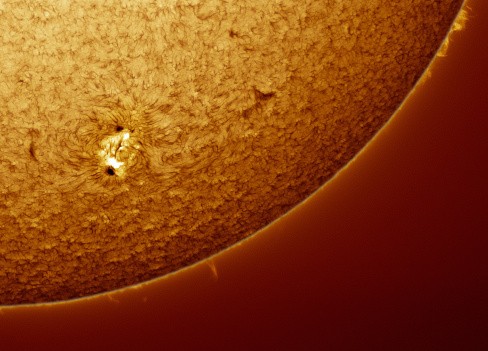A Sunspot that researchers have seen manifesting on the most prominent star in our Solar System is speculated to release significant solar flares that would directly hit the planet. It is stronger than initial claims. Researchers and astronomers predicted a minor solar flare, particularly a pair of C-class flares, but it was then reclassified to more than its class.
Sunspot: Astronomers Say its Massive, Significant Solar Flares

According to CNET, a massive sunspot may be acting up, despite being a dark spot in the Sun that is cooler than those around it on the big ball of lava in the center of the Solar System. Sunspot AR3038 also grew in size and is now double compared to previous studies that investigated it and monitored its progression.
NASA heliophysicist C. Alex Young said (via EarthSky.org) that this sunspot will soon emit solar flares directed to the planet, and it is a C-class event once it takes place.
However, it is refuted by Astronomer Tony Phillips (via Spaceweather.com) that AR3038 is bringing a stronger solar flare, one that is in the M-class rank.
Read Also : Powerful Solar Flare To Reach Earth as Shown by NOAA's Forecast Model-Creating G2-Class Geomagnetic Storm
M-Class Solar Flares: What Are Its Effects?
The M-Class solar flares present in space today are mid-level ones that may or may not trigger geomagnetic storms on the planet. It is more potent than C-class ones but is not as significant as G-class solar flares that are famous for starting an effect on the electromagnetic field of the planet.
At its best, it may disrupt magnetic fields and affect instruments present in the world, with little chance of disrupting power grids.
Solar Flares and Sunspots
Solar flares are mostly dismissed for the humans on the surface, as they would not highly affect their way of life, apart from those that use the compass during hiking trips or traverse the waters with boats. Most of what solar flares bring is a geomagnetic storm, and it disrupts the electromagnetic field present on the planet.
However, some massive ones have significant effects on the likes of satellites and power grids, and it may result in service interruptions for communications and electricity on Earth. The world experiences solar flares from Sunspots on multiple occasions, but these are not affecting humans the way some thought they might be doing.
Humans are safe from solar flares apart from the extra heat that it causes, as it also expands the Earth's atmosphere.
The world is set to experience a significant effect on their lifestyle once this solar flare hits, resulting from the massive sunspot that the researchers have been looking into for several weeks. It should not be a cause of panic, as it is harmless to humans, but not for those that use navigation and instruments that it may affect soon.
This article is owned by TechTimes
Written by Isaiah Richard
ⓒ 2025 TECHTIMES.com All rights reserved. Do not reproduce without permission.




